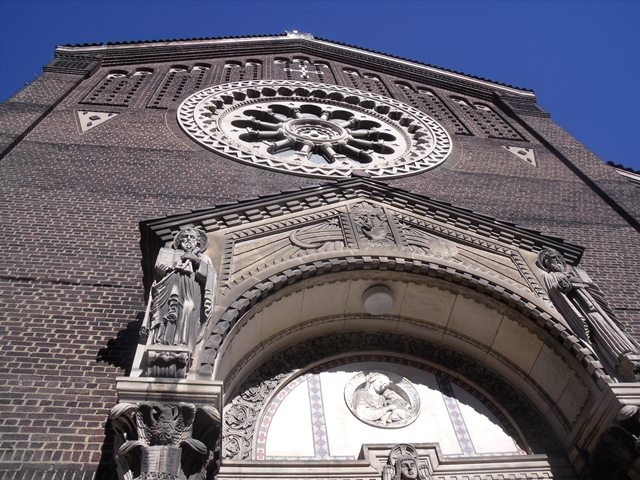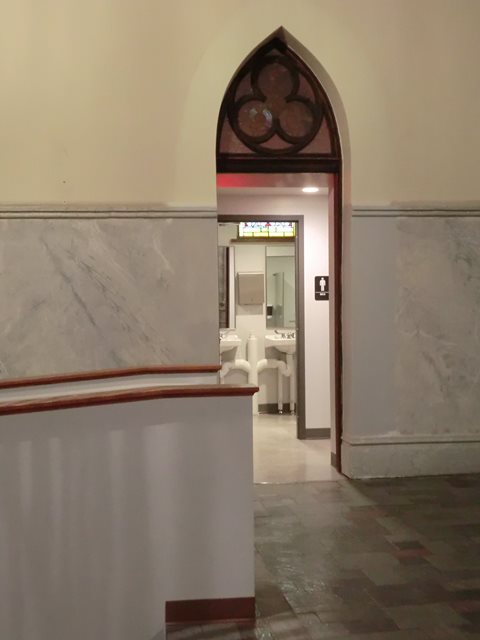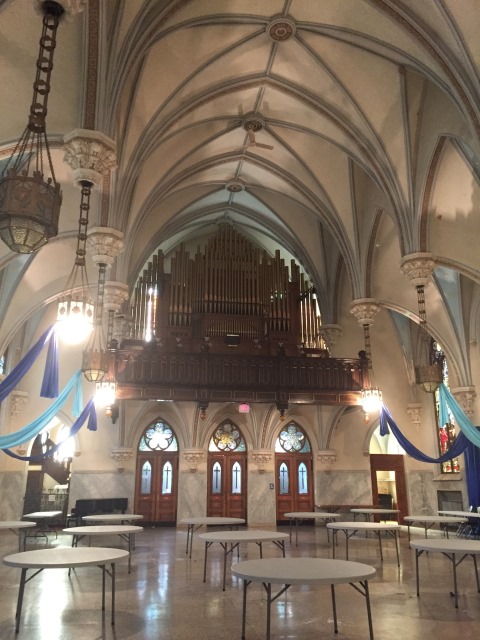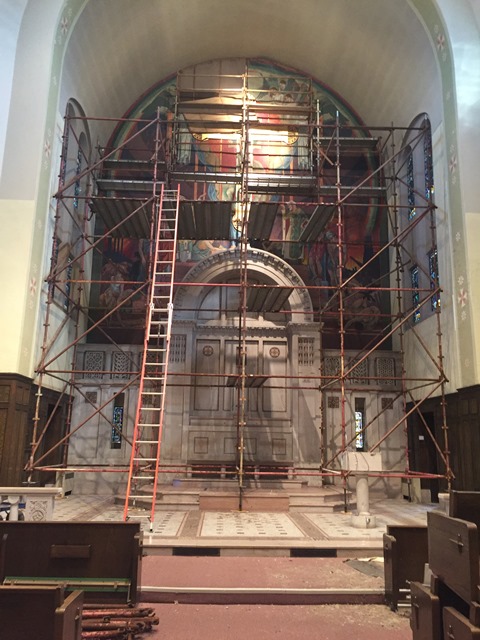Each year, one of the most meaningful programs of the Commission is the Keystone Historic Preservation Grant program. With this grant program, the PHMC partners with local communities to address key historic preservation issues. As we found out through our local recent preservation plan community forums, every region of the Commonwealth has its own unique challenges. Some problems are immense, but we are proud that we are able to partner with local organizations to make inroads with these challenges and find alternatives to demolition of Pennsylvania’s historic resources.
The Cambria City Historic District in Johnstown, Cambria County (Key #097607) is one community where the Keystone Grant program has made an impact. In 2009, the Catholic Diocese of Altoona-Johnstown consolidated five of its parishes due to declining membership and population loss. Three significant neighborhood buildings were left vacant, but available for sensitive adaptive reuses. Luckily, the community recognized the potential loss of architectural and community character should these iconic structures be allowed to suffer from lack of maintenance or an even worse fate, demolition. A community design charrette with a number of stakeholders including the Johnstown Area Heritage Association (JAHA), Partners for Sacred Places and Save Our Steeples, identified potential compatible new uses for the buildings that could anchor a cultural district. JAHA applied for and received a grant through the Keystone program in 2010 to continue the pre-development feasibility planning. The project was successful and was the much needed first step in refining the vision of Cambria City Cultural District.

Former St. Columba’s in Cambria City, Johnstown
One of the partners of the original charrette, 1901 Church, Inc. acquired the former Immaculate Conception Church, 306 Board Street, Johnstown from the Diocese in 2012 for rehabilitation as an event center. The High Victorian Gothic building with a steeply pitched slate roof, tan brick exterior walls and intricately carved brownstone accents was in overall sound condition but exhibited the effects of 105 years of age. The obvious exterior envelope issues could be seen but could there be other concealed building issues present that could hamper the organization’s plan to find a new use for the building? A second grant from Keystone program funded a comprehensive building assessment to identify system problems, draft a preservation priority plan and prepare cost estimates to care for the building. Working with a Western Pennsylvania architectural firm, Landmarks SGA, LLC, the project team prioritized preservation issues and addressed code issues necessary to reopen the building as The Grande Hall on Broad Street, a concert and events center.

Grant Hall interior
One of the first concerns identified in the Preservation Plan was the lack of accessible bathrooms, an amenity important for the marketability of its new function. The PHMC provided a construction grant in fiscal year 2013 to install two accessible restrooms in a former sacristy. The project team utilized a forgotten doorway complete with stained glass transom as an entrance. The Grand Halle now has a robust calendar of concerts, even organ concerts on the original pipe organ, to ensure the building is still a vibrant part of the Cambria City Historic District. I was fortunate recently to travel to Johnstown with my colleague, Barbara Frederick to visit The Grande Hall on Broad Street and check out the results.

Grand Hall event space
In addition to stopping by the Grand Halle, we also looked at a second project that 1901 Church, Inc. began with the assistance of Keystone grant funding. The former St. Columba, the Cambria City’s parish founded by Irish immigrants, was designed by John T. Comes of Pittsburgh and includes a large apse mural that includes a steel mill, an industrialist and immigrant workers in addition to its other religious themes. The mural will serve as a backdrop to 1901 Church’s plan to begin a live theater production on the immigrant experience in Johnstown. Similar to their previous project at the Grande Halle, the organization secured assistance through the Keystone Historic Preservation Grant program to undertake a thorough feasibility study that will help them sensitively adapt the former church sanctuary for live theater. The project is now underway as they study conservation techniques in the decorative interior as well as the exterior envelope. It was a treat to visit the property with its new stewards and imagine the building’s next phase of life.

St. Columba’s mural under restoration.
Curious about the Keystone Historic Preservation Grant program in your community? Have a potential project that needs funding? Want to know more about funding opportunities through the PHMC? Mark your calendar for one of two webinars to learn more about the program guidelines and what makes a competitive application. The first webinar is scheduled for Thursday, January 19th at 2:00pm to 3:00pm. The same material will be presented again on Tuesday, January 24th at 10:00am to 11:00am. Look for more information and sign up information concerning these learning opportunities in early January.
Remember! Keystone applications are due on March 1, 2017 through the PHMC’s eGRANT system. The eGRANT application is open to access the Keystone Historic Grant applications under both the project and construction categories. If selected for funding, the funded project (including the required matching share) may not begin until October of 2017.
Send me an email or give me a call! I’m happy to discuss your potential projects to see if the Keystone program might be able to make a difference in your community.
I own a property at 601 Chestnut Street in Johnstown. It is the former Roth House and part of the historical walking tour in CAMBRIA City. I was looking at options for preservation of this property. Can you be of assistance? Thank you.
Hi Jeremy – the funding programs available through the PA SHPO are described on this page of the PHMC website. The Keystone grant program is not available to private property owners, but the state and federal historic tax credits may be an option for you.